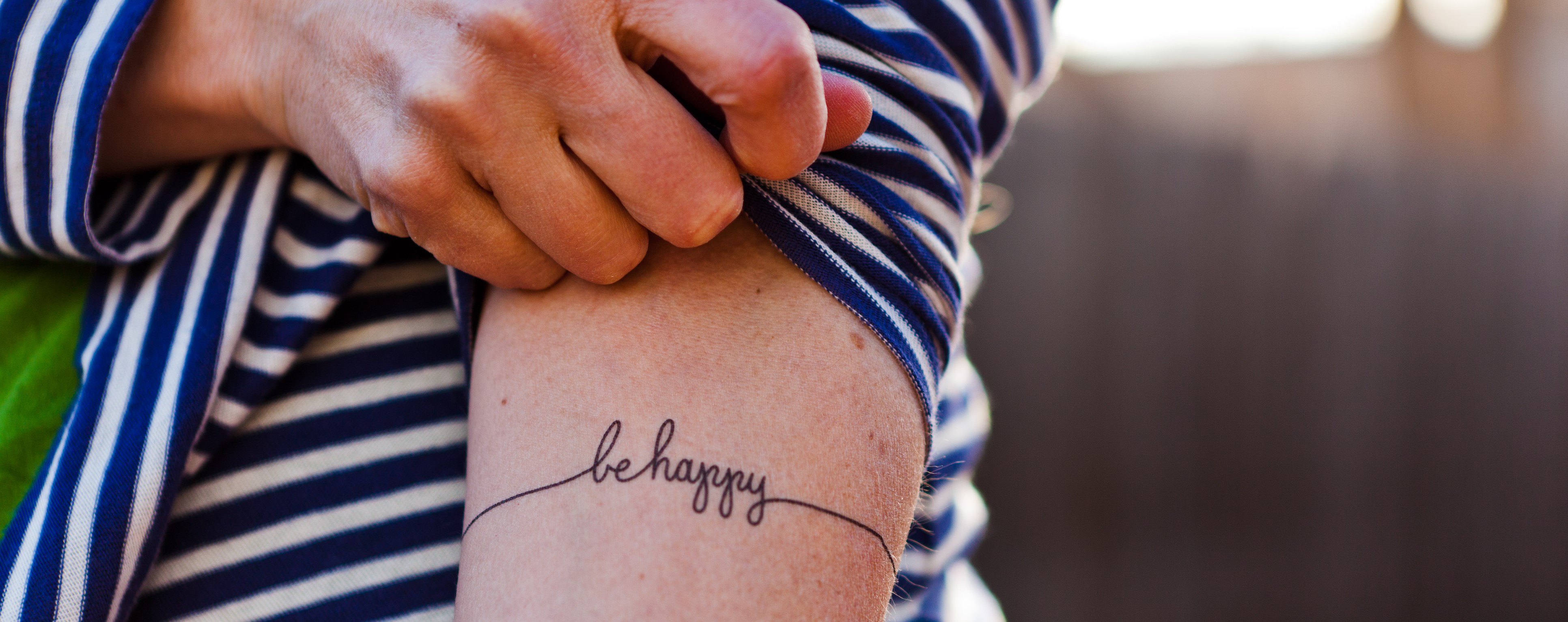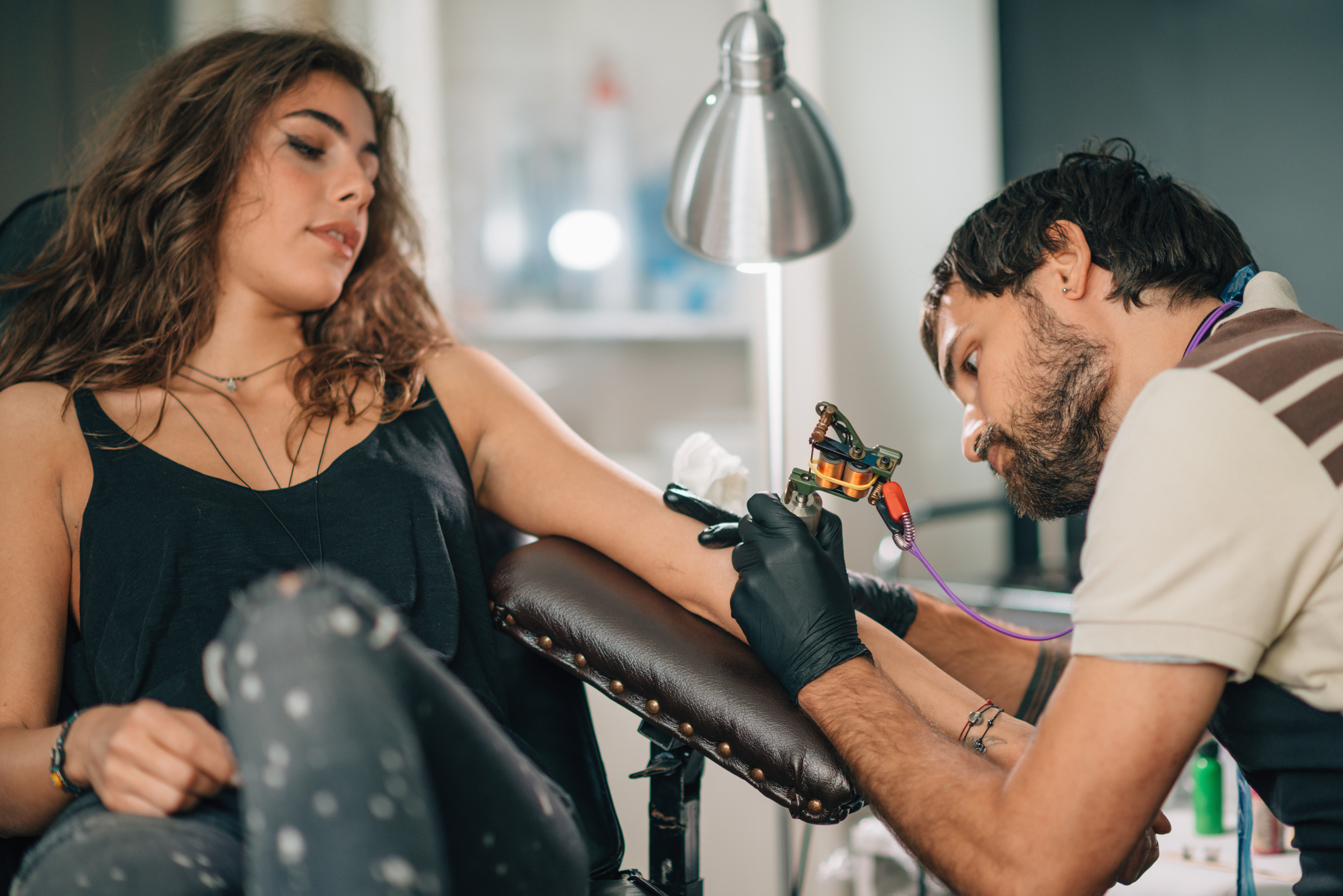Micro tattoos: everything you should know before getting one
Chrissy Teigen has micro tattoos on her hands — if you’re thinking about getting some, read on


Frankly, we're thankful that the fear of what our parents would say put us off getting a tattoo for so long—it saved us from inking ourselves with designs we know we’d hate now! That wait time also gave room for the trend of micro tattoos to grow. The delicate, easily concealable, fine-line tattoos have become all the rage, with chic celebrities like Rihanna, Gigi Hadid, Ariana Grande, Hailey Baldwin and, most recently, Chrissy Teigen turning the dainty body adornments into the ultimate "cool girl" accessory.
But unlike that designer handbag in your closet or the best huggie earrings in your jewelry box, tattoos are permanent fixtures, so it’s really important you know everything there is to know about getting a micro tattoo before a needle comes anywhere near your skin. Read on to discover five things we wish we'd known before getting a micro tattoo (because once you get one micro tattoo, you'll probably want more!).
1. Micro tattoos can be pricey
Sure, a small tattoo shouldn't take much time—a simple heart tattoo shouldn't take more than 10 minutes to do—but when you contact tattooists for quotes on your design, you might be surprised at how much a small tattoo could be.
Julia Bertholdi-Saad, a London-based tattoo artists, says: "When it comes to pricing, what you really pay for is the skill of the tattoo artist, their years of experience, their design, and sometimes their notoriety."
"Most artists have a minimum rate that covers all the set up before your appointment, plus ink and needle costs and factors in their hourly rate too. For some this minimum charge might be enough to cover a simple micro tattoo," says Bertholdi-Saad. "However, a new and trendy studio in Shoreditch would charge more than an older, smaller place in a small town in Leeds! And if the artist you choose is well known and sought after, their minimum charge will reflect that, which can make even a small and simple design costly."
So, be warned you might have to save up before booking your appointment.
A post shared by chrissy teigen (@chrissyteigen)
A photo posted by on
- The key ear piercing trends for 2021 you need to know about
2. Imperfections are more obvious
You usually see freshly inked micro tattoos on Instagram, so you may not know that once healed, these tattoos will undoubtedly look different. Lisbon-based tattooist Bela Hilario, who has guest residencies around the world, explains: "Brand new tattoos from a skilled artist will always look pretty perfect as there is no skin covering the ink and dulling the finish, plus the ink won’t have had any time to 'move' and settle."
Once your tattoo is fully healed, you might feel rather disappointed—you might be happy with the design, but the movement of the ink and the lack of uniformity after the fact may irk you. "This is not unusual, as often those that are not familiar with tattoos expect the perfection they’ve seen online, which is really unrealistic," says Hilario. "While it is the artist’s responsibility to explain this to prospective clients, it’s also a good idea to search online for healed micro tattoo images, too—the likes of Hailey Bieber, Bella Thorne and Cara Delevingne have plenty."
Make sure you zoom in on such photos, and when you do you’ll notice that lines are never perfect, color pay off can vary, and over time fading can be more apparent than a larger tattoo. However, if you get your micro tat with the understanding that your tattoo will end up being as unique as you are, both beautiful and imperfect, you’ll love it a lot quicker!
3. It’s best to see a specialist
It's best to be incredibly thorough when it comes to researching the artist you'll eventually chose to do your tattoo. Some tattoo artists may have hundreds of amazing photos of inked skin on their Instagram, but that doesn't mean they specialize in fine-line micro tattoos.
"Tattoo artists that are able to offer many different styles well are rare. We tend to specialize so we can really hone our craft," says Bertholdi-Saad. "However, now that micro tattoos are on trend many tattooists say they can do them, but most designs call for fine lines which takes a lot of practice, as controlling a single needle machine is far harder than it looks."
Not seeing a specialist or viewing any examples of your artist's fine-line work might be a risk that doesn't pay off, so just beware!

- How to pick an ear piercing according to the experts
4. They can still hurt
Many of the needle-based cosmetic treatments we've tried in the past have all begun with a hefty dose of numbing cream, and you'd assume that a micro tattoo would follow suit. But alas, "numbing cream can alter the texture of the skin making it harder to gauge where you’re depositing ink," explains Hilario.
She continues: "Even a small tattoo can be painful, as it really depends on how well you tolerate pain. You also have to take into account where you’re being tattooed. Areas with the least fat, most nerve endings and close to the bone like the ankles, inner wrist, or the inside of your elbow are generally the most painful places to get inked." Think of the sensation as being scratched by an angry cat.
5. Your skin can reject ink
We've seen it happen with tattooed eyebrows—your skin can totally reject the ink and push it right out while it heals. (A win for your immune system but not for your brows!) "It’s true that if ink isn’t deposited in the right layer of the skin it can seep out, and you generally lose some ink during the healing process—but not so much that you’d need a touch-up," Hilario says. "However, ink rejection, while rare, is often actually your body having an allergic response to something ‘foreign’ and attempting to rid itself of something that shouldn’t be there."
Sadly, there is no way to know how your skin will respond to tattoo ink, but "if you have a history of keloid scarring, or sensitive skin, it’s important you inform your tattoo artist during your consultation as they may ask you to do a patch test first, or speak to a dermatologist before going ahead with a tattoo," says Hilario.
Amerley is an award-winning beauty & lifestyle journalist who has been writing for the UK’s most well-known glossies, websites and newspapers for over a decade. Known for her ability to predict the next big trend, there is really very little she won’t try for a story. From microblading and injectables, to10 step skincare plans and breathing her way to better skin, Amerley loves to share her experiences and write relatable, informative and trend-led copy for beauty novices and junkies alike.
